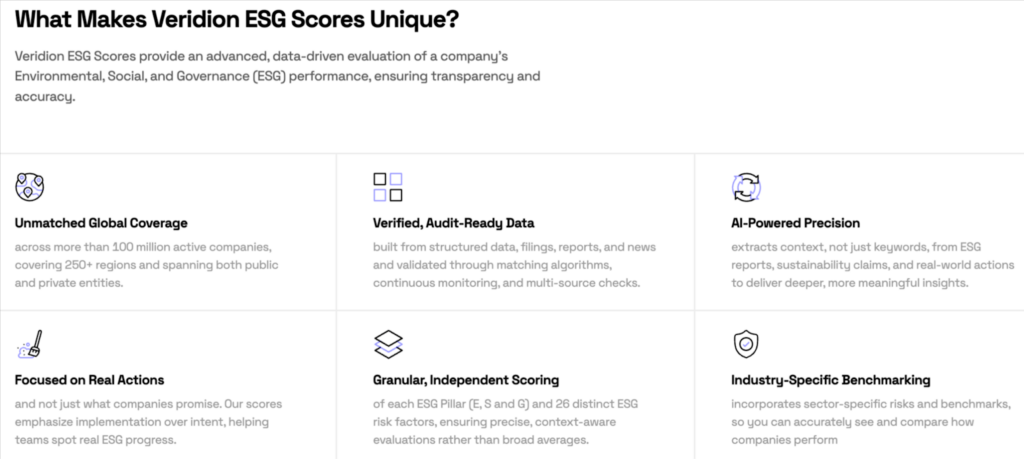# Test with G1GC, logging output to g1.log
java -Xmx8g -XX:+UseG1GC -Xlog:gc*:file=g1.log \
-jar target/heapothesys.jar -a 2048 -s 25 -d 600Run 2: ZGC (The Low-Latency Collector)
# Test with ZGC, logging output to zgc.log
# Note: ZGC often benefits from a larger heap to do its concurrent work.
java -Xmx8g -XX:+UseZGC -Xlog:gc*:file=zgc.log \
-jar target/heapothesys.jar -a 2048 -s 25 -d 600By comparing the percentile outputs and the detailed logs (g1.log vs. zgc.log), you can make a data-driven decision. You will likely observe that while G1GC might offer better overall throughput, ZGC provides significantly lower p99 and max pause times, making it a better choice for an interactive service.
Simulating Different Application Profiles
You can tune the Heapothesys parameters to mimic your specific application’s memory profile:
- Stateless Web Service: High allocation rate, low survival rate. Many temporary objects are created per request and quickly discarded.
- Example:
-a 4096 -s 10
- Example:
- Stateful Caching Service: Moderate allocation rate, high survival rate. A large portion of the heap is occupied by a long-lived cache.
- Example:
-a 512 -s 80
- Example:
Running benchmarks that mirror your application’s behavior is key to effective tuning. This kind of detailed analysis is essential for the entire Java ecosystem news, as it empowers developers using frameworks from Spring to Jakarta EE to optimize their specific use cases.
Section 4: Best Practices, Optimization, and the Broader Context

To get the most out of Heapothesys and GC benchmarking in general, it’s important to follow established best practices and be aware of common pitfalls.
Best Practices for Reliable Benchmarking
- Isolate the Environment: Run benchmarks on a machine with no other significant processes running. Use tools like Docker to create a consistent and isolated environment if possible.
- Allow for JVM Warm-up: The JVM performs Just-In-Time (JIT) compilation and other optimizations during the initial phase of execution. Always run your benchmark for a sufficient duration (e.g., 10-15 minutes) and consider discarding the results from the first few minutes.
- Run Multiple Iterations: Due to the non-deterministic nature of schedulers and other system factors, run each benchmark configuration at least 3-5 times and analyze the aggregated results.
- Measure, Don’t Guess: Never change a GC tuning flag without measuring its impact. Heapothesys provides the tool to validate your changes with empirical data.
The Impact on Modern Java Development
Tools like Heapothesys are more relevant than ever. With the advent of Project Loom news and the introduction of virtual threads in modern Java, applications can now handle millions of concurrent tasks. While virtual threads are lightweight from a memory perspective, this massive concurrency can still generate significant pressure on the garbage collector. Ensuring low GC latency is paramount to prevent a single pause from stalling thousands of virtual threads.
Similarly, for developers following Reactive Java news and building non-blocking systems, a long GC pause can violate service level objectives (SLOs) by blocking the event loop. By using Heapothesys, teams can proactively select and tune a GC that aligns with their reactive architecture’s latency requirements. This contribution to the OpenJDK news landscape benefits all users, whether they are on Amazon Corretto, Adoptium, Azul Zulu, or another OpenJDK distribution.
Conclusion: Empowering Performance-Driven Development
Amazon Corretto’s Heapothesys is a significant and welcome addition to the Java performance engineering toolkit. It demystifies the complex world of GC latency by providing a simple, standardized, and open-source method for measuring and comparing collector performance. By simulating realistic workloads with tunable allocation and survival rates, it empowers developers to move beyond guesswork and make data-driven decisions for their JVM tuning strategies.
Whether you are building next-generation applications with virtual threads, optimizing existing Spring Boot services, or simply aiming to provide a smoother experience for your users, understanding your application’s GC behavior is non-negotiable. We encourage you to explore Heapothesys, integrate it into your performance testing pipelines, and contribute to its development. By embracing tools like this, the Java community can continue to build robust, scalable, and highly performant applications that meet the demands of the modern digital landscape.
Introduction to High-Fidelity GC Performance Tuning
In the world of high-performance Java applications, garbage collection (GC) latency is a critical, yet often misunderstood, metric. For applications ranging from latency-sensitive microservices built with Spring Boot to large-scale data processing systems, unpredictable GC pauses can lead to unacceptable response times and a poor user experience. The ongoing evolution in the Java ecosystem, with advancements in OpenJDK and new features like virtual threads from Project Loom, places an even greater emphasis on understanding and optimizing JVM behavior. This is where the latest Amazon Corretto news brings a powerful new tool to the forefront for the entire Java community.
Amazon Corretto, a production-ready distribution of the OpenJDK, has introduced Heapothesys, an open-source GC latency benchmark designed to provide a clear, consistent, and realistic way to measure the performance of various garbage collectors. Unlike synthetic microbenchmarks that often fail to represent real-world workloads, Heapothesys simulates a steady-state application environment, allowing developers and performance engineers to make informed decisions about GC tuning. This article provides a comprehensive technical deep-dive into Heapothesys, exploring its core concepts, practical implementation, advanced usage, and best practices for achieving optimal Java performance.
Section 1: Core Concepts of GC Latency and Benchmarking
Before diving into Heapothesys, it’s essential to understand the problem it solves. Garbage collection is the JVM’s automatic memory management process, but this convenience can come at a cost: application pauses. Understanding the nature of these pauses is the first step toward mitigating them.
What is GC Latency?
GC latency refers to the duration of “stop-the-world” pauses, where the JVM halts all application threads to safely perform memory cleanup. While modern garbage collectors like G1, ZGC, and Shenandoah have made incredible strides in minimizing these pauses, they can never be eliminated entirely. For an e-commerce platform, a 200ms pause could mean a lost sale. For a high-frequency trading system, it could mean a significant financial loss. The goal of GC tuning is not just to reduce the average pause time but to control the entire latency profile, especially the high percentiles (p99, p99.9) that represent the worst-case user experience.
The Challenge of Accurate Measurement
Benchmarking GC is notoriously difficult. A common pitfall is creating a workload that doesn’t accurately reflect the application’s real memory allocation and object survival patterns. An application that creates many short-lived objects (like a typical web request in a Spring Boot application) will stress the GC’s young generation differently than an application with many long-lived objects (like an in-memory cache using Hibernate’s second-level cache). Heapothesys addresses this by providing simple, tunable parameters to model these distinct patterns.
How Heapothesys Works
Heapothesys operates on a straightforward yet powerful principle: it generates a workload that maintains a steady-state heap occupancy. It does this by controlling two primary factors:
- Allocation Rate: The rate at which new objects are created, measured in MB/second. This simulates the application’s throughput.
- Survival Rate: The percentage of the heap that consists of long-lived objects. This simulates the application’s memory footprint or “live data set.”
By running a workload with a specific allocation and survival rate for a set duration, Heapothesys forces the garbage collector to perform its duties under consistent, repeatable pressure. It then logs the duration of each GC pause, providing a detailed histogram of latency percentiles. This approach provides a stable baseline for comparing different GC algorithms or tuning parameters, which is invaluable Java performance news for engineers.
# A conceptual overview of the Heapothesys workload loop
# This is not actual code, but a representation of the logic.
# 1. Define target heap survival size (e.g., 50% of 4GB heap = 2GB)
# 2. Allocate objects until the target survival size is reached. These are the "long-lived" objects.
# 3. Start the main loop for the specified duration:
# a. Allocate a chunk of "transient" objects at the specified allocation rate.
# b. Let the GC run and clean up these transient objects.
# c. Periodically, "touch" the long-lived objects to ensure they remain live.
# d. Record all GC pause times.
# 4. After the duration, print the summary of pause time percentiles.Section 2: A Practical Guide to Implementing Heapothesys

Getting started with Heapothesys is designed to be a streamlined process. It requires a basic understanding of Java and command-line tools. Let’s walk through the setup and a first benchmark run.
Setup and Building the Tool
Heapothesys is an open-source project, so the first step is to clone its repository from GitHub. Once cloned, you can build the project using a standard Java build tool like Maven or Gradle. This process is familiar to anyone following Maven news or Gradle news and working with the Java ecosystem.
# 1. Clone the repository
git clone https://github.com/corretto/heapothesys.git
cd heapothesys
# 2. Build the project using Maven
# This will compile the source and package it into an executable JAR file.
mvn clean packageAfter the build completes successfully, you will find the executable JAR file (e.g., heapothesys.jar) in the target directory. This single file is all you need to run your benchmarks.
Running Your First Benchmark
With the JAR file ready, you can execute your first test. The most important command-line flags are:
-a <rate>: The allocation rate in MB/sec.-s <percent>: The target survival rate as a percentage of the total heap.-d <seconds>: The duration of the test in seconds.
Let’s run a simple 5-minute benchmark with a 1024 MB/sec allocation rate and a 50% survival rate. We’ll also specify a 4GB heap size (-Xmx4g) for the JVM.
# Run a basic benchmark using the default garbage collector (G1GC on modern JDKs)
# -Xmx4g: Sets the maximum heap size to 4 gigabytes.
# -jar: Specifies the executable JAR to run.
# -a 1024: Sets the allocation rate to 1024 MB/sec.
# -s 50: Sets the target survival rate to 50% of the heap.
# -d 300: Runs the benchmark for 300 seconds (5 minutes).
java -Xmx4g -jar target/heapothesys.jar -a 1024 -s 50 -d 300Interpreting the Results
After the benchmark completes, Heapothesys will print a summary of the GC pause times. The output will look something like this:
--- GC Pause Time Latency (milliseconds) ---
count: 150
min: 1.23
p50: 5.45
p90: 12.89
p99: 45.67
p99.9: 112.34
max: 150.12
This tells you that over the 5-minute run, there were 150 GC pauses. 50% of the pauses were shorter than 5.45ms, 99% were shorter than 45.67ms, but the single worst pause (max) was 150.12ms. This detailed percentile data is far more useful than a simple average, as it helps you understand the tail latencies that directly impact user experience.
Section 3: Advanced Benchmarking and GC Tuning Scenarios
The true power of Heapothesys is revealed when you use it to compare different GC configurations and simulate realistic workloads. This is crucial for developers working with the latest Java versions, as covered in Java 17 news and Java 21 news, where new GC improvements are constantly being introduced.
Comparing G1GC vs. ZGC
Let’s simulate a latency-sensitive service that requires low pause times. We want to compare the default G1 Garbage Collector with the ultra-low-latency Z Garbage Collector (ZGC). We’ll use the same workload for both runs to ensure a fair comparison. We will also enable GC logging to capture detailed information for later analysis.

Run 1: G1GC (The Throughput-Oriented Collector)
# Test with G1GC, logging output to g1.log
java -Xmx8g -XX:+UseG1GC -Xlog:gc*:file=g1.log \
-jar target/heapothesys.jar -a 2048 -s 25 -d 600Run 2: ZGC (The Low-Latency Collector)
# Test with ZGC, logging output to zgc.log
# Note: ZGC often benefits from a larger heap to do its concurrent work.
java -Xmx8g -XX:+UseZGC -Xlog:gc*:file=zgc.log \
-jar target/heapothesys.jar -a 2048 -s 25 -d 600By comparing the percentile outputs and the detailed logs (g1.log vs. zgc.log), you can make a data-driven decision. You will likely observe that while G1GC might offer better overall throughput, ZGC provides significantly lower p99 and max pause times, making it a better choice for an interactive service.
Simulating Different Application Profiles
You can tune the Heapothesys parameters to mimic your specific application’s memory profile:
- Stateless Web Service: High allocation rate, low survival rate. Many temporary objects are created per request and quickly discarded.
- Example:
-a 4096 -s 10
- Example:
- Stateful Caching Service: Moderate allocation rate, high survival rate. A large portion of the heap is occupied by a long-lived cache.
- Example:
-a 512 -s 80
- Example:
Running benchmarks that mirror your application’s behavior is key to effective tuning. This kind of detailed analysis is essential for the entire Java ecosystem news, as it empowers developers using frameworks from Spring to Jakarta EE to optimize their specific use cases.
Section 4: Best Practices, Optimization, and the Broader Context

To get the most out of Heapothesys and GC benchmarking in general, it’s important to follow established best practices and be aware of common pitfalls.
Best Practices for Reliable Benchmarking
- Isolate the Environment: Run benchmarks on a machine with no other significant processes running. Use tools like Docker to create a consistent and isolated environment if possible.
- Allow for JVM Warm-up: The JVM performs Just-In-Time (JIT) compilation and other optimizations during the initial phase of execution. Always run your benchmark for a sufficient duration (e.g., 10-15 minutes) and consider discarding the results from the first few minutes.
- Run Multiple Iterations: Due to the non-deterministic nature of schedulers and other system factors, run each benchmark configuration at least 3-5 times and analyze the aggregated results.
- Measure, Don’t Guess: Never change a GC tuning flag without measuring its impact. Heapothesys provides the tool to validate your changes with empirical data.
The Impact on Modern Java Development
Tools like Heapothesys are more relevant than ever. With the advent of Project Loom news and the introduction of virtual threads in modern Java, applications can now handle millions of concurrent tasks. While virtual threads are lightweight from a memory perspective, this massive concurrency can still generate significant pressure on the garbage collector. Ensuring low GC latency is paramount to prevent a single pause from stalling thousands of virtual threads.
Similarly, for developers following Reactive Java news and building non-blocking systems, a long GC pause can violate service level objectives (SLOs) by blocking the event loop. By using Heapothesys, teams can proactively select and tune a GC that aligns with their reactive architecture’s latency requirements. This contribution to the OpenJDK news landscape benefits all users, whether they are on Amazon Corretto, Adoptium, Azul Zulu, or another OpenJDK distribution.
Conclusion: Empowering Performance-Driven Development
Amazon Corretto’s Heapothesys is a significant and welcome addition to the Java performance engineering toolkit. It demystifies the complex world of GC latency by providing a simple, standardized, and open-source method for measuring and comparing collector performance. By simulating realistic workloads with tunable allocation and survival rates, it empowers developers to move beyond guesswork and make data-driven decisions for their JVM tuning strategies.
Whether you are building next-generation applications with virtual threads, optimizing existing Spring Boot services, or simply aiming to provide a smoother experience for your users, understanding your application’s GC behavior is non-negotiable. We encourage you to explore Heapothesys, integrate it into your performance testing pipelines, and contribute to its development. By embracing tools like this, the Java community can continue to build robust, scalable, and highly performant applications that meet the demands of the modern digital landscape.

